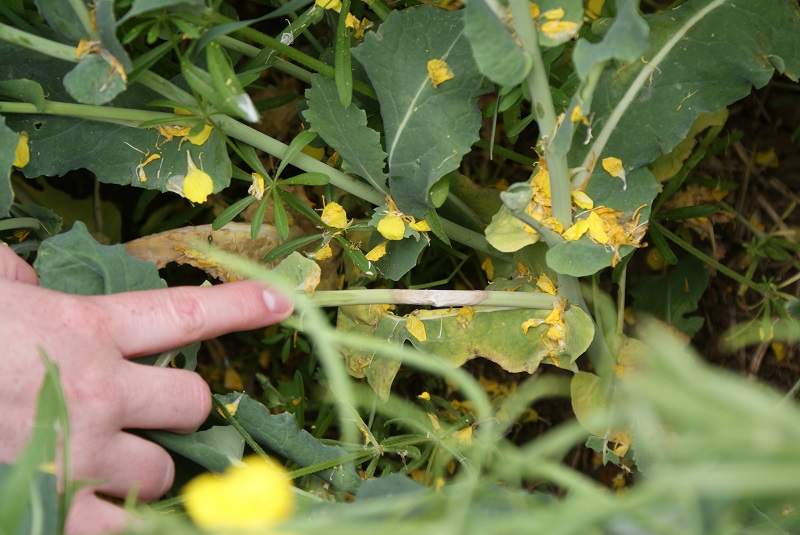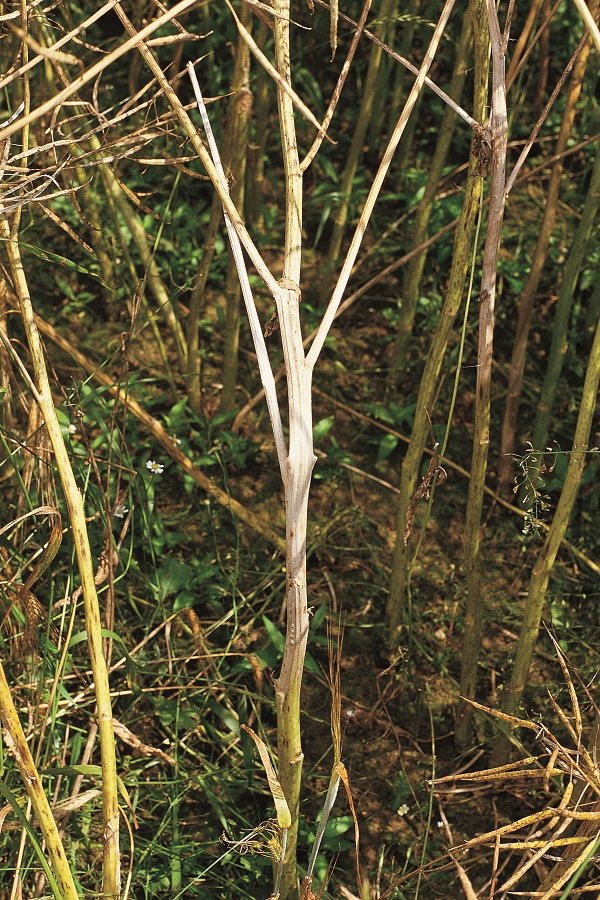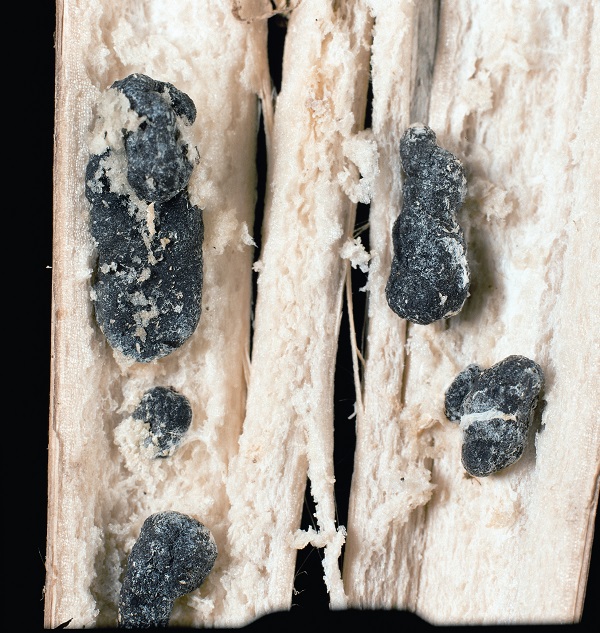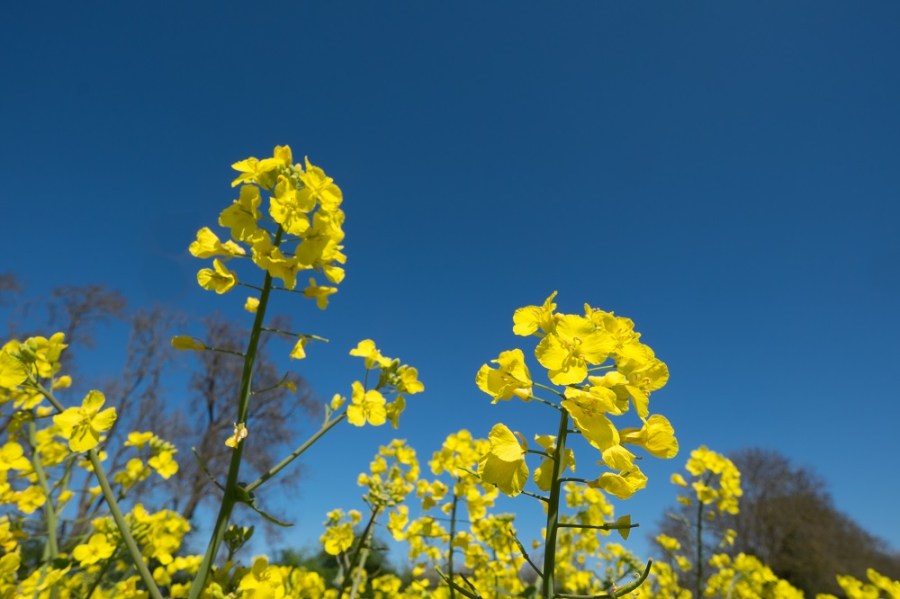Sclerotinia has the potential to decimate yields. CPM seeks advice from experts in a county where the threat is often highest.
The debate is always whether to put on a second treatment.
By Lucy de la Pasture
It’s a sight that makes the heart sink. The oilseed rape crop has been looking full of promise all season, you’ve been feeling quietly confident that things have gone well and then you spot them – patches of white stems, ‘rat-droppings’ and lodging – the tell-tale signs of sclerotinia infection.
Not many OSR diseases have the visual impact of sclerotinia and it’s high on the list of grower priorities when it comes to fungicide applications, says Dr Julie Smith, senior research scientist based at ADAS Rosemaund in Herefordshire.
Although sclerotinia is a slightly sporadic disease and doesn’t occur in every season, it made an unwelcome return in 2016, catching some growers unawares. The question is why was this, and how can we guard better against a repeat performance?

Petals need to be carrying ascospores, then the infected petals have to stick to the leaves of OSR plants to enable the fungus to infect the plant.
According to Julie Smith, weather data revealed more infection events than ‘normal’ took place last spring. For infection to occur, three factors have to happen simultaneously – ascospore presence isn’t enough on its own, she explains.
“For plants to become infected, a minimum temperature of 7⁰C, with relative humidity at 80% or above for at least a day is required. Petals need to be carrying ascospores, then the infected petals have to stick to the leaves of OSR plants to enable the fungus to infect the plant and for sclerotinia to become a problem in the crop.”
And although the disease is widely associated with wet springs and moisture is required for infection to occur, it needs to be the right kind of moisture.

Bleached stems are a tell-tale sign that sclerotinia control was inadequate.
“Heavy rain suppresses ascospore release and under these conditions, petals are often washed off the leaves and don’t have the opportunity to stick to them. In contrast, light rain or even just heavy dews offer perfect conditions for petals to stick and ascospore germination,” says Julie Smith.
As petal fall is the main culprit when it comes to sclerotinia infection, apetalous or reduced petal varieties have been suggested as a way of circumventing disease spread. Defra-funded work carried out by ADAS has investigated this by tracking flower opening and petal fall in apetalous specimens and found the sepals and stamens can also be a source of sclerotinia inoculum, rather blowing the theory.

Infected stems contain sclerotia, which look like rat droppings. These then provide inoculum to infect subsequent OSR crops.
Further work revealed the leaf layers that were most likely to catch petals were situated between the bottom and mid-canopy, leaf layers 7-9. In the study, sclerotinia infection subsequently came in on the stem at the same level confirming the importance of petal-stick in the infection process, as well as the need for good fungicide coverage and penetration of the canopy.
So do we really want varieties with big leaves at this level, asks David Lines, Herefordshire independent agronomist and AICC member. Although they provide a good source for photosynthesis, he reasons that retention of these leaves late in the season isn’t desirable in a sclerotinia-prone situation.
Julie Smith agrees with the logic but suggests leaf size plays a much smaller role in sclerotinia infection than the weather during the flowering period so probably isn’t a major factor.
“In 2016, first sclerotinia sprays were applied when 30-50% of flowers were open on the main stem, locally this was around 22 April on early flowering varieties and 3 May on later flowering types. One of the problems was that April was a cool month and crops stayed in flower for a long time, meaning a second spray was required.
“Combined with the fact that minimum temperatures in May were slightly higher than the long-term average, this meant we saw an increased number of infection events,” she comments.
David Lines nods his agreement and stresses the duration of flowering is all-important where sclerotinia is concerned.
“Last season I saw more sclerotinia in Troy because it’s a later-flowering variety and this coincided with a period of weather that resulted in multiple infection events. For my crops, a fungicide application for sclerotinia control is a given – the debate is always whether to put on a second treatment,” he adds.
Agronomist and pathologist also agree that timing the sclerotinia application is the most important factor to get right, with product choice of secondary importance.
“There’s really nothing to choose between Proline (prothioconazole), Pictor (boscalid+ dimoxystrobin), Filan (boscalid) and prothioconazole (PTZ) plus Amistar (azoxystrobin),” says David Lines.
“Last year I switched to PTZ during flowering because of the light leaf spot pressure (LLS) but I have tended to go down the Filan or Pictor route in the past. This season there’s not nearly as much LLS in crops and using chemistry from groups other than the azoles is good resistance management.”
Julie Smith points out that some work done by ADAS found that fungicides from different groups affected the pathogen at slightly different stages of the life cycle.
“SDHIs and strobilurins are more effective against spore germination and germ tube elongation so we often found clumps of un-germinated ascospores on petals, whereas azoles are more active against mycelial growth. So there could be an argument that a mix of different activities may offer better control, but trials show all groups of chemistry are effective against sclerotinia if the timing is right,” she explains.
So what is the best timing for that all-important first spray? According to Bayer’s Gareth Bubb mid-flower is the optimum time to control the disease.
“Later infections are not so damaging and a second spray is a top up if flowering gets extended. The aim is protection and you need your most effective products so it’s Proline, Filan or Pictor. The advantage with Proline is that you can also use it for wheat ear sprays so it won’t get stuck in the shed.”
David Lines reckons that the sprayer needs to be ready as the first petals begin to fall, bearing in mind that the fungicides are working purely as protectants and coating the petals with fungicide plays a part in preventing sclerotinia spread.
It’s something Bayer have looked at in trials, adds Gareth Bubb, and could be a good strategy where the risk is high.
“We did some work some years back where we applied Folicur (tebuconazole) at yellow bud, followed by Proline at mid-flower. It showed an improvement in sclerotinia control. If you know that sclerotinia pressure will be high, it’s a good strategy but no one can predict flowering period. A robust dose of an effective product at mid-flower can often be sufficient. No one wants to spray if they don’t need to.”
Julie Smith adds that there is some evidence that under low-moderate sclerotinia risk, there’s no need to increase dose of PTZ to above 0.5 l/ha but under any higher pressure, as David Lines finds in Herefordshire, then the dose needs to be more robust.
And he agrees on the importance of not skimping on the first spray when in a high-risk situation.
“It’s akin to the flag leaf spray in wheat in terms of importance and the second spray (if necessary) is like an ear wash – a top-up as the first fungicide begins to run out of steam. Timing of the second spray needs to be three weeks after the first to maintain protection,” he adds.




